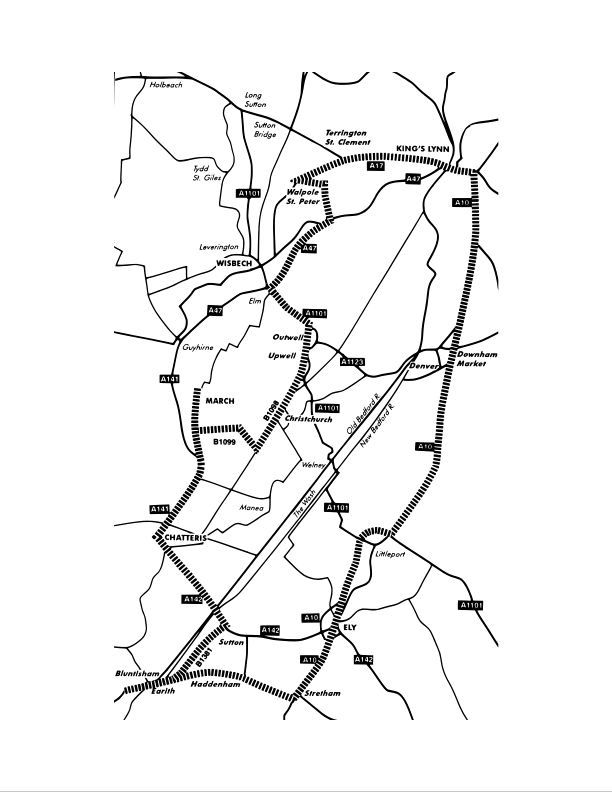
From Ely take the A10 to Stretham and then the A1123 through Haddenham and Earith to Bluntisham church. Dorothy and her parents moved to the village from Oxford when she was four years old and Dorothy's father was the rector. Inside the church you will find a board in the south aisle, with reference to Reverend Sayer's care of the church. Notice the little hall southwest of the church where Dorothy used to play the violin at village concerts. Continue along the main road for half a mile to see Dorothy Sayer's home, a big, yellow-brick Georgian house in wooded grounds, formerly the Rectory, now Bluntisham House. Dorothy was happiest at Bluntisham, and spent a happy childhood there. "I recollect very well my first arrival at the Rectory wearing a brown pelisse and bonnet trimmed with feathers, and accompanied by my nurse and maiden aunt who carried a parrot in a cage." She attended Godolphin School, Salisbury during th& time her family lived here.
Return to Earith, cross the Bedford Rivers and turn left along the B1381 following the bank of the New Bedford River. At Sutton turn left and follow signs for March along the A142 and A141.
March is a small market town of great charm. As you enter the town you will see St Wendreda's church on the left. The church was one of several which inspired the background for her novel The Nine Taylors. It is famous for its spectacular hammer beam roof, which is decorated with 120 flying angels and one hidden devil. "My God" muttered Wimsey, not without reverence, and softly repeated to himself "He rode upon the cherubims and did fly: He came flying upon the wings of the wind".
From March take the B1099 and B1098 to Christchurch. On entering the village, turn left towards the church and the red-bricked Victorian Rectory.
Henry and Helen Sayers lived here from 1917 until the death of the Reverend Sayers in 1928. Dorothy liked it less well than Bluntisham, but was a frequent visitor to her parents' home.
Henry Sayer's photograph can still be seen hanging in the vestry, and there is a commemorative tablet to the couple at the west end of the nave. "In grateful memory of the service of Henry Sayers, Priest, from 1917 to 1928 Rector of this Parish, and of Helen Mary his wife, this tablet is placed by parishioners". They are buried in an unmarked grave on the north east side of the churchyard. There is an old pub in the village called the Dun Cow.
From Christchurch take the B1412 to Upwell, which is a small village divided by the Well Stream. Upwell and Outwell take their name from the Well Stream which used to flow to Wisbech before the river was diverted to King's Lynn. The village once had a number of religious settlements and looks very Dutch.
From here take the A1101 to Wisbech, which is an ancient port with wonderful old Georgian houses fronting the river known as the Brinks. There is a purpose built museum, and markets on a Thursday and Saturday.
Coming out of Wisbech on the A47, follow the signs to Walpole St Peter, used as the location of The Nine Taylors in the BBC film. There are some fine Elizabethan houses opposite the church. It has a famous flower festival each year.
Follow the road to Terrington St Clement. The church is known as the Cathedral of the Marshes and its tower was another of the features inspiring The Nine Taylors.
From Terrington St Clement take the A17 to King's Lynn and then the A10 to Downham Market. Follow signs to Denver, where you can visit Denver Sluice and stop at Jennyns Arms Public House for a well earned break! Lord Peter Wimsey the detective in the Nine Taylors was the son of the Duke of Denver. Take the A10 back to Ely via Littleport.